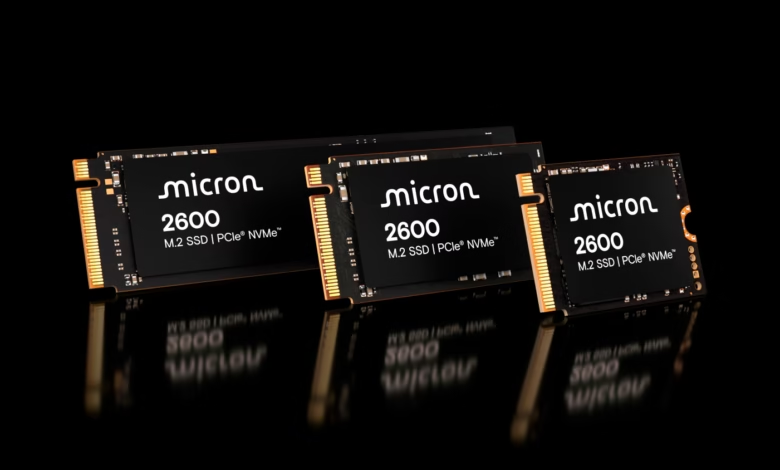Micron 2600 QLC SSD Matches TLC Speeds with 7,200 MB/s Reads

▼ Summary
– Micron has launched the 2600 SSD, a client SSD for OEMs with PCIe 4.0 speeds, available in 512GB, 1TB, and 2TB capacities.
– The SSD uses Phison’s PS5029-E29T controller and Micron’s 276-layer QLC NAND in a DRAMless design, featuring Adaptive Write Technology (AWT) for improved performance.
– AWT dynamically shifts data between SLC, TLC, and QLC modes to optimize write speeds, starting with SLC and moving to QLC during idle periods.
– The 2600 comes in three form factors (2230, 2242, 2280) and offers sequential read/write speeds up to 7,200/6,500 MB/s, with endurance ranging from 200TBW to 700TBW.
– Micron has begun shipping the SSD to OEMs, with pricing and warranty details varying by manufacturer.
Micron’s latest 2600 SSD series delivers impressive PCIe 4.0 performance while utilizing innovative QLC NAND technology. Designed primarily for OEM integration, these drives combine Phison’s advanced controller with Micron’s proprietary 276-layer memory architecture in a compact, power-efficient package.
The standout feature of the Micron 2600 lies in its Adaptive Write Technology (AWT), which dynamically shifts between SLC, TLC, and QLC modes to optimize performance. Fresh data initially writes at SLC speeds before transitioning to TLC and eventually settling into QLC storage during idle periods. This intelligent caching mechanism helps overcome traditional QLC limitations, allowing the drive to rival TLC-based SSDs in real-world speeds.
Available in 2230, 2242, and 2280 form factors, the single-sided design ensures broad compatibility with everything from ultraportable laptops to handheld gaming devices. Storage options include 512GB, 1TB, and 2TB models, though higher capacities like 4TB or 8TB aren’t currently offered.
Performance metrics vary by capacity, with the 2TB model leading the pack at 7,200 MB/s sequential reads and 6,500 MB/s writes. Random I/O peaks at 1.1 million IOPS, though smaller capacities see slightly reduced throughput. Endurance ratings follow typical QLC expectations, 200TBW for 512GB, scaling up to 700TBW for the 2TB version, making these drives suitable for mainstream workloads rather than extreme write-intensive scenarios.
Power efficiency remains a strong suit, with sleep states drawing under 2.5mW and active idle below 100mW. Micron has already begun supplying these drives to OEM partners, meaning retail availability and warranty terms will depend on system integrators.
For users seeking high-speed storage without sacrificing efficiency, the Micron 2600 presents a compelling option, especially in space-constrained devices where its compact design and adaptive performance tuning shine.
(Source: Tom’s Hardware)
